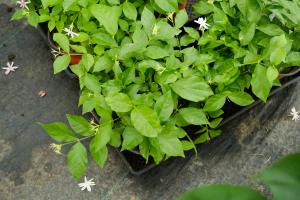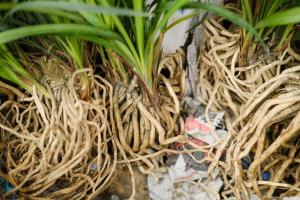Introduction
Water plants are an excellent source of food that has been utilized by humans for centuries. Edible water plants offer a wide range of benefits as they are rich in nutrients, high in fiber, and low in calories. The use of water plants for food is gaining popularity for their nutritious and delicious nature. This article looks at some of the edible water plants and their nutritional benefits.
Asian Water Spinach
Asian water spinach, also known as kangkong or water morning glory, is a popular leafy vegetable that is commonly used in Southeast Asian cuisine. This water plant is highly nutritious and rich in vitamins A and C, iron, and calcium. The leaves and stems of the plant can be consumed raw or cooked, and they have a mild flavor.
Watercress
Watercress is a leafy green vegetable that grows in streams and springs. It is highly nutritious and is considered one of the healthiest foods in the world. This water plant is a rich source of vitamin C, vitamin K, calcium, and antioxidants. Watercress has a tangy and slightly bitter taste, and it is commonly consumed raw in salads or used as a garnish.
Lotus Root
Lotus root is an edible root of the lotus plant, which is found in Asia, Australia, and the Americas. This water plant has a soft, starchy texture and a mildly sweet taste. The lotus root is rich in fiber, vitamin C, and potassium. It is commonly used in soups, stir-fries, and salads.
Water Chestnut
Water chestnut is an aquatic plant that is native to Asia. It is a popular ingredient in Chinese cuisine and is commonly used in stir-fries, soups, and salads. The water chestnut has a sweet and crunchy taste and is rich in fiber, vitamin B6, potassium, and copper.
Nori Seaweed
Nori seaweed is a red seaweed that is commonly used in Japanese cuisine. This water plant is rich in protein, fiber, and antioxidants. Nori seaweed has a mild and slightly sweet taste and is used to make sushi rolls, snacks, and soups.
Conclusion
Edible water plants offer a range of nutritional benefits and are a great addition to a healthy diet. These plants provide an excellent source of vitamins, minerals, and fiber, which are essential for maintaining a healthy body. By incorporating edible water plants into your meals, you can enhance the nutritional value of your diet and enjoy a delicious addition to your dishes.

 how many times do yo...
how many times do yo... how many planted tre...
how many planted tre... how many pine trees ...
how many pine trees ... how many pecan trees...
how many pecan trees... how many plants comp...
how many plants comp... how many plants can ...
how many plants can ... how many plants and ...
how many plants and ... how many pepper plan...
how many pepper plan...

































